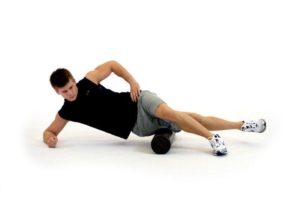Running Injury Prevention
Hi everyone, Caitlin here. As you know I do a lot of running! So much so, I’ve made the Australian team a few times… but that’s another story. I get asked a lot about how to get into running, or increase distances safely – so I thought I’d put a blog together for you.

As the weather cools off and ‘fun run’ season starts, we naturally see more people out hitting the roads and treadmill. Running is a great all round exercise. It helps us get outside and to clear your mind, however people often underestimate the load it places on the body. To avoid injury and keep the running joy, here are our top tips for running injury prevention:

Take a gradual approach
As with any new activity, our bodies need time to adapt to running. There are lots of “from couch to 5km” programs out there and I would suggest at least looking at a few. Choose one that’s appropriate, where you can modify if for your fitness and body. Generally speaking I would encourage 1-3 days of running per week to begin with. Keeping in mind, if you have done a lot of running in the past, you will have some muscle memory and be able to adapt quicker than someone who has no significant running training.

Have rest days
Even once you have been running for a few weeks and started to notice an improvement in your fitness, make sure you still have rest days. Our bodies need time to recover from training. Your body also needs time to rest so that it can adapt to the training and make improvements – the same way that you must take your foot off the accelerator to change gears to inevitably go faster. In my own training, I have one day a week of complete rest as well as another 1-2 days of minimal running (I do strength training on these days).

Check your form
While technique is not everything, there are some areas to keep an eye on to help prevent injury. The easiest way to do this, is get someone to record some footage of your running (side on and front/back). First up – you want to be symmetrical. If there are any major differences side to side, this may predispose you to an injury. Your running stride should come from the hips – ie your glutes and hip flexors should be doing more of the work than your calves. They are big muscles designed to take the load of running! Maintaining good control through the pelvis is also important for preventing hip, knee and back injuries. You want to avoid the hips dropping down or rotating side to side.

Look after your muscles
Your body is taking on new loads so you are likely to experience some muscle tightness. Regular muscle releases (trigger ball, foam rolling, massage etc) is key for ensuring you don’t accumulate too much muscle tightness.

If you are keen to get started in running, feel free to speak to us. Being musculoskeletal physios, we can check your body over and give you specific advice regarding injury prevention for your body!






